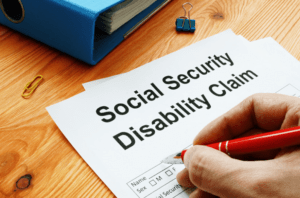
How To Prove Your Sleep Apnea is Secondary to PTSD
A secondary service-connected condition can increase your VA disability rating for PTSD or another condition. However, it’s your responsibility to prove that the secondary condition is related to your service-connected condition. While there is data connecting sleep apnea to PTSD, the connection isn’t presumed. Here’s what you need to know about establishing that your sleep apnea is secondary to PTSD, and why it matters.
If you already have a VA disability rating for PTSD, you can file a new claim for the secondary condition. Or, if you haven’t yet filed a claim for your service-connected PTSD, you can list both conditions on your initial claim and call out the sleep apnea as secondary to PTSD.
Sleep Apnea and PTSD
Data shows that PTSD is linked to a variety of sleep disturbances, including sleep apnea. Though there is no conclusive evidence of the reason for the correlation between PTSD and sleep apnea, prevalence of obstructive sleep apnea is higher among people with PTSD than among the general population. One theory is that the correlation is due to a lower arousal threshold in those suffering from PTSD.
To establish this connection in your claim, you will need to present medical evidence that you suffer from sleep apnea. You will also need to provide evidence that the condition is at least as likely as not to be related to your service-connected PTSD. This will typically require a letter from a doctor explaining the likely connection between the two conditions.
Call 1-888-373-4722 or complete a Free Case Evaluation form
How are PTSD and Sleep Apnea Rated Together?
If you already have a VA disability rating for PTSD, recognition of sleep apnea as a secondary-connected condition could increase your VA disability rating and the benefits you receive.
PTSD is rated under the General Rating Formula for Mental Disorders and may result in a disability rating of 0%, 10%, 30%, 50%, 70%, or 100%. Additional mental health disorders are rolled into the same rating, but a physical condition like sleep apnea will be assigned its own rating. The possible ratings for sleep apnea are 0%, 30%, 50%, or 100%.
Here’s an example of how a combined rating might work.
Say the veteran is rated 70% disabled due to PTSD and 50% disabled due to sleep apnea. A simple combination of those numbers adds to 100%, but that’s not how the VA calculates a combined disability rate. Instead, the second disability rating is applied only to what’s left after the initial rating.
In this case, the PTSD rating is 70%, so there’s 30% “non-disabled” left to work with. The 50% sleep apnea rating is applied to that remaining 30% (.30 x .50) for an additional disability rating of 15%. That figure is added to the original VA disability rating. In this case, that totals to 85%. However, the VA only assigns disability ratings in multiples of 10, so 85% would be rounded up to 90%.
The difference in the monetary benefit for a 70% disability rating and a 90% disability rating in 2025 is $538.77/month.
Give Yourself the Advantage of an Experienced Advocate
At Disabled Vets, our advocates have a thorough understanding of the VA claims and appeals processes and the type of evidence the VA is looking for. To learn more about how we can help you submit the strongest claim possible, call us today at 888-373-4722 or contact us here now.
Call 1-888-373-4722 or complete a Free Case Evaluation form
Learn More Here:
Call 1-888-373-4722 or complete a Free Case Evaluation form







